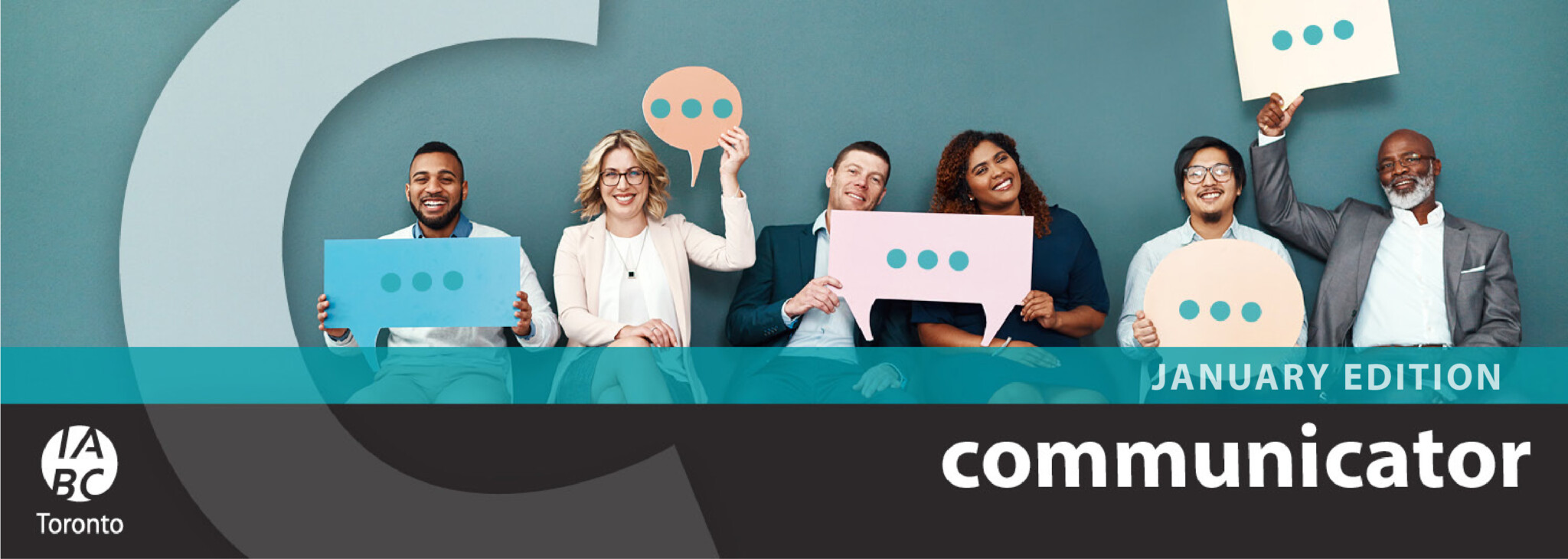By Matisse Hamel-Nelis
Matisse Hamel-Nelis advises how communicators can lead the industry with focus on accessible content creation.

Did you know that approximately one in four Ontarians live with a disability? Or that 15 percent of the world’s population identifies as having a disability? The United Nations has called this demographic the world’s largest minority, and its numbers will only grow in the next 25 years, as the population ages.
As communicators, we are the gatekeepers of information for our brands and our audiences. If we implement best practices that ensure accessible content creation, we set a tone that accessibility should be the standard. The impact of accessible communications can be felt far and wide as it becomes part of our day-to-day business practices, helping to break down barriers to information for people with disabilities.
So how do we ensure that we’re catering to this ever-increasing segment of the population? Before we can implement accessibility to our communications, we must first understand what exactly “accessibility” means.
- What is accessibility?
Accessibility is the practice of making information, activities, and environments sensible, meaningful, and usable for as many people as possible. When it comes to communications, accessibility means ensuring that your messaging is designed so that all audiences can understand the information you’re sharing. - What is accessible communication?
Accessible communication is perceivable, understandable, and communicated through an accessible medium. So, no matter what communication tactic you’re using, ensuring its accessibility is a sure-fire way to increase your reach. - Is accessibility a focus in Ontario and beyond?
Many counties have developed accessibility legislation to ensure that people with disabilities have equal access to, and barrier-free interactions with, digital content.In Ontario, we have the Accessibility for Ontarians with Disabilities Act, 2005 (AODA), which came into effect on January 1, 2021, for large organizations. As part of this legislation, professional communicators need to understand and adhere to the Information and Communications Standard, which focuses on communication requirements for various items, including websites.Ontario isn’t the only province with accessibility legislation. Manitoba, Nova Scotia, and Quebec have also enacted provincial accessibility legislation, including their own versions of the Information and Communication Standard. Additionally, British Columbia and Newfoundland are in the process of finalizing their own accessibility legislation, and it’s only a matter of time before other provinces follow their lead.In Canada, we also have the Accessible Canada Act (ACA), which is currently in the process of developing its own communications standards. The Act, and the accessibility regulations, apply to sectors within the federal jurisdiction, like banking, telecommunications, transportation, and the Government of Canada itself.
What can we start doing today to make our content more accessible?
There are several easy ways to make sure that your communications are accessible, including:
- Writing in plain language.
- Ensuring your images are tagged with appropriate alt text.
- Adding captions and described audio to any videos you share.
- Offering transcripts for your podcasts.
- Using camel case when adding hashtags on social media posts.
- Following the Web Content Accessibility Guidelines (WCAG) when building your websites; and
- Making sure your PDF documents are PDF/UA compliant.
Remember: It’s not just communicators that need to be accessible; accessibility needs communicators to establish an acceptable standard. As communicators, we can work together to create the best practices that will trickle down to our clients and audiences, which will, in turn, help to bring about the change required to make access to information a barrier-free process for everyone.

Matisse Hamel-Nelis is a Vice President of Communications for AbleDocs and a program co-ordinator of Durham College’s PR & Strategic Communications program. She’s also the Director of Communications for the IABC/Toronto IDEA Committee. An international award-winner, she is best described as a strategic, forward-thinking communicator focused on goal-oriented social PR with accessibility at the fore. She holds a post-graduate certificate in Accessible Media Production from Mohawk College, and advanced diploma in PR from Durham College, in addition to the International Association of Accessibility Professionals’ Certified Professional in Accessibility Core Competencies (CPACC) and Accessible Documents Specialist (ADS) designations. Connect with Matisse on Twitter
Return to the Fall 2021 Issue of Communicator
READ MORE

Communicator January 2025: Accessibility and Artificial Intelligence (AI)
In our January edition, we explore how Accessibility and Artificial Intelligence (AI) are reshaping the communications landscape, balancing cutting-edge innovation with empathy and inclusion for a rapidly evolving future. Read […]
10 Goals for Growth for 2025
By Mandy Silverberg Mandy Silverberg offers goal setting tips for communicators to grow personally and professional in 2025. Looking to grow professionally and personally in 2025? Start […]
How AI Can Make us Better Professionals
By Bryan G. Jones, Founder and CEO BGJ Global Business owner Bryan G. Jones discusses the impact of artificial intelligence on the role of communicators and offers tips on […]
Communicating your message in multiple languages
By Linda Bicho-Vachon Linda Bicho-Vachon looks at AI translation tools and whether they can reduce our reliance on human translators. If you’re a multi-national company, communicating a […]
Communicating across cultures
Making messages meaningful in a multicultural world By Roopal Chaturvedi “As communicators, our task is clear: make messages land, not bounce.” Roopal Chaturvedi describes the challenges of communicating across cultures […]